A Printed Xi-Shaped Left-Handed Metamaterial on Low-Cost Flexible Photo Paper
Abstract
:1. Introduction
2. Design of the Printed Unit Cell
3. Methodology
4. Inkjet Printing Process
5. Results and Discussion
6. Conclusions
Acknowledgments
Author Contributions
Conflicts of Interest
References
- Veselago, V.G. The electrodynamics of substances with simultaneously negative values of and μ. Sov. Phys. Uspekhi 1968, 10, 509. [Google Scholar] [CrossRef]
- Shelby, R.A.; Smith, D.R.; Schultz, S. Experimental verification of a negative index of refraction. Science 2001, 292, 77–79. [Google Scholar] [CrossRef] [PubMed]
- Jalil, M.; Rahim, M.; Samsuri, N.; Dewan, R.; Kamardin, K. Flexible ultra-wideband antenna incorporated with metamaterial structures: Multiple notches for chipless rfid application. Appl. Phys. A 2017, 123, 48. [Google Scholar] [CrossRef]
- Gao, B.; Yuen, M.M.; Ye, T.T. Flexible frequency selective metamaterials for microwave applications. Sci. Rep. 2017, 7, 45108. [Google Scholar] [CrossRef] [PubMed]
- Li, J.; Zeng, Q.; Liu, R.; Denidni, T.A. Beam-tilting antenna with negative refractive index metamaterial loading. IEEE Antennas Wirel. Propag. Lett. 2017. [Google Scholar] [CrossRef]
- Wang, B.; Zhai, X.; Wang, G.; Huang, W.; Wang, L. Broadband coplane metamaterial filter based on two nested split-ring-resonators. Front. Optoelectron. 2016, 9, 565–570. [Google Scholar] [CrossRef]
- Kalantari, L.S.; Bakr, M.H. Wideband cloaking of objects with arbitrary shapes exploiting adjoint sensitivities. IEEE Trans. Antennas Propag. 2016, 64, 1963–1968. [Google Scholar] [CrossRef]
- He, X.; Li, S.; Yang, X.; Shi, S.; Wu, F.; Jiang, J. High-sensitive dual-band sensor based on microsize circular ring complementary terahertz metamaterial. J. Electromagn. Waves Appl. 2017, 31, 91–100. [Google Scholar] [CrossRef]
- Wang, L.; Liu, S.; Kong, X.; Zhang, H.; Ding, G.; Liu, L. A broadband Flexible Metamaterial Absorber based on High-impEdance Surface. In Proceedings of the 2016 IEEE International Workshop on Electromagnetics: Applications and Student Innovation Competition (iWEM), Nanjing, China, 16–18 May 2016; pp. 1–3. [Google Scholar]
- Ziolkowski, R.W. Design, fabrication, and testing of double negative metamaterials. IEEE Trans. Antennas Propag. 2003, 51, 1516–1529. [Google Scholar] [CrossRef]
- Islam, S.S.; Faruque, M.R.I.; Islam, M.T. The design and analysis of a novel split-h-shaped metamaterial for multi-band microwave applications. Materials 2014, 7, 4994–5011. [Google Scholar] [CrossRef]
- Hasan, M.M.; Faruque, M.R.I.; Islam, S.S.; Islam, M.T. A new compact double-negative miniaturized metamaterial for wideband operation. Materials 2016, 9, 830. [Google Scholar] [CrossRef]
- Zhang, Y.; Duan, J.; Zhang, B.; Zhang, W.; Wang, W. A flexible metamaterial absorber with four bands and two resonators. J. Alloys Compd. 2017, 705, 262–268. [Google Scholar] [CrossRef]
- Staude, I.; Schilling, J. Metamaterial-inspired silicon nanophotonics. Nat. Photonics 2017, 11, 274–284. [Google Scholar] [CrossRef]
- Joshi, J.; Pattnaik, S.S.; Devi, S. Metamaterial embedded wearable rectangular microstrip patch antenna. Int. J. Antennas Propag. 2012, 2012, 974315. [Google Scholar] [CrossRef]
- Tenggara, A.P.; Park, S.; Yudistira, H.T.; Ahn, Y.; Byun, D. Fabrication of terahertz metamaterials using electrohydrodynamic jet printing for sensitive detection of yeast. J. Micromech. Microeng. 2017, 27, 035009. [Google Scholar] [CrossRef]
- Kim, S.; Ren, Y.-J.; Lee, H.; Rida, A.; Nikolaou, S.; Tentzeris, M.M. Monopole antenna with inkjet-printed ebg array on paper substrate for wearable applications. IEEE Antennas Wireless Propag. Lett. 2012, 11, 663–666. [Google Scholar] [CrossRef]
- Yang, L.; Rida, A.; Vyas, R.; Tentzeris, M.M. Rfid tag and rf structures on a paper substrate using inkjet-printing technology. IEEE Trans. Microw. Theory Tech. 2007, 55, 2894–2901. [Google Scholar] [CrossRef]
- Cook, B.S.; Shamim, A. Inkjet printing of novel wideband and high gain antennas on low-cost paper substrate. IEEE Trans. Antennas Propag. 2012, 60, 4148–4156. [Google Scholar] [CrossRef]
- Caloz, C.; Itoh, T. Electromagnetic Metamaterials: Transmission Line Theory and Microwave Applications; John Wiley & Sons: Hoboken, NJ, USA, 2005. [Google Scholar]
- Nicolson, A.; Ross, G. Measurement of the intrinsic properties of materials by time-domain techniques. IEEE Trans. Instrum. Meas. 1970, 19, 377–382. [Google Scholar] [CrossRef]
- Islam, S.S.; Faruque, M.R.I.; Islam, M.T. A new direct retrieval method of refractive index for the metamaterial. Curr. Sci. 2015, 109, 337–342. [Google Scholar]
- Chen, X.; Grzegorczyk, T.M.; Wu, B.-I.; Pacheco, J., Jr.; Kong, J.A. Robust method to retrieve the constitutive effective parameters of metamaterials. Phys. Rev. E 2004, 70, 016608. [Google Scholar] [CrossRef] [PubMed]
- Zhou, J.; Koschny, T.; Soukoulis, C.M. An efficient way to reduce losses of left-handed metamaterials. Opt. Express 2008, 16, 11147–11152. [Google Scholar] [CrossRef] [PubMed]
- Houck, A.A.; Brock, J.B.; Chuang, I.L. Experimental observations of a left-handed material that obeys snell’s law. Phys. Rev. Lett. 2003, 90, 137401. [Google Scholar] [CrossRef] [PubMed]
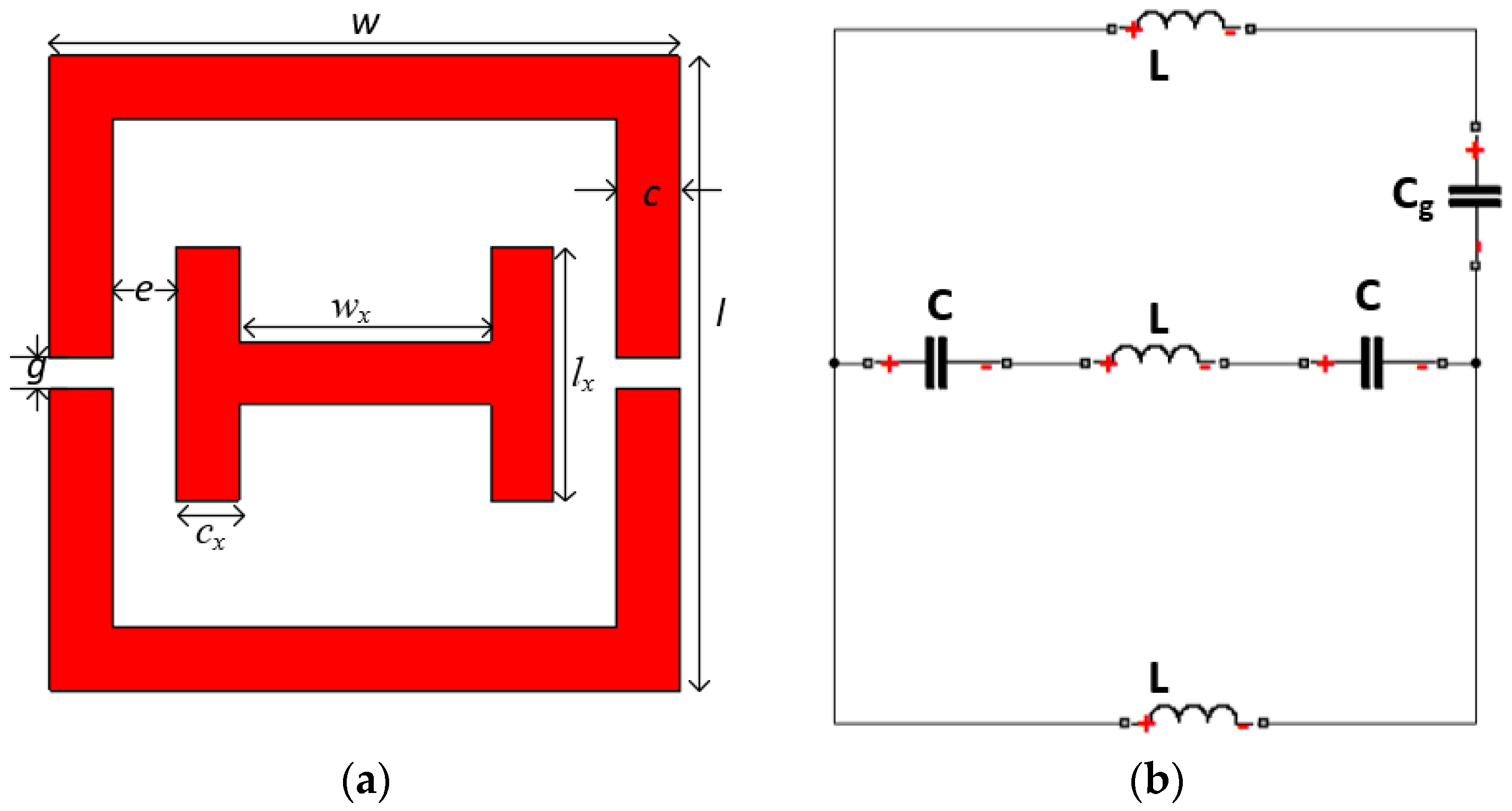
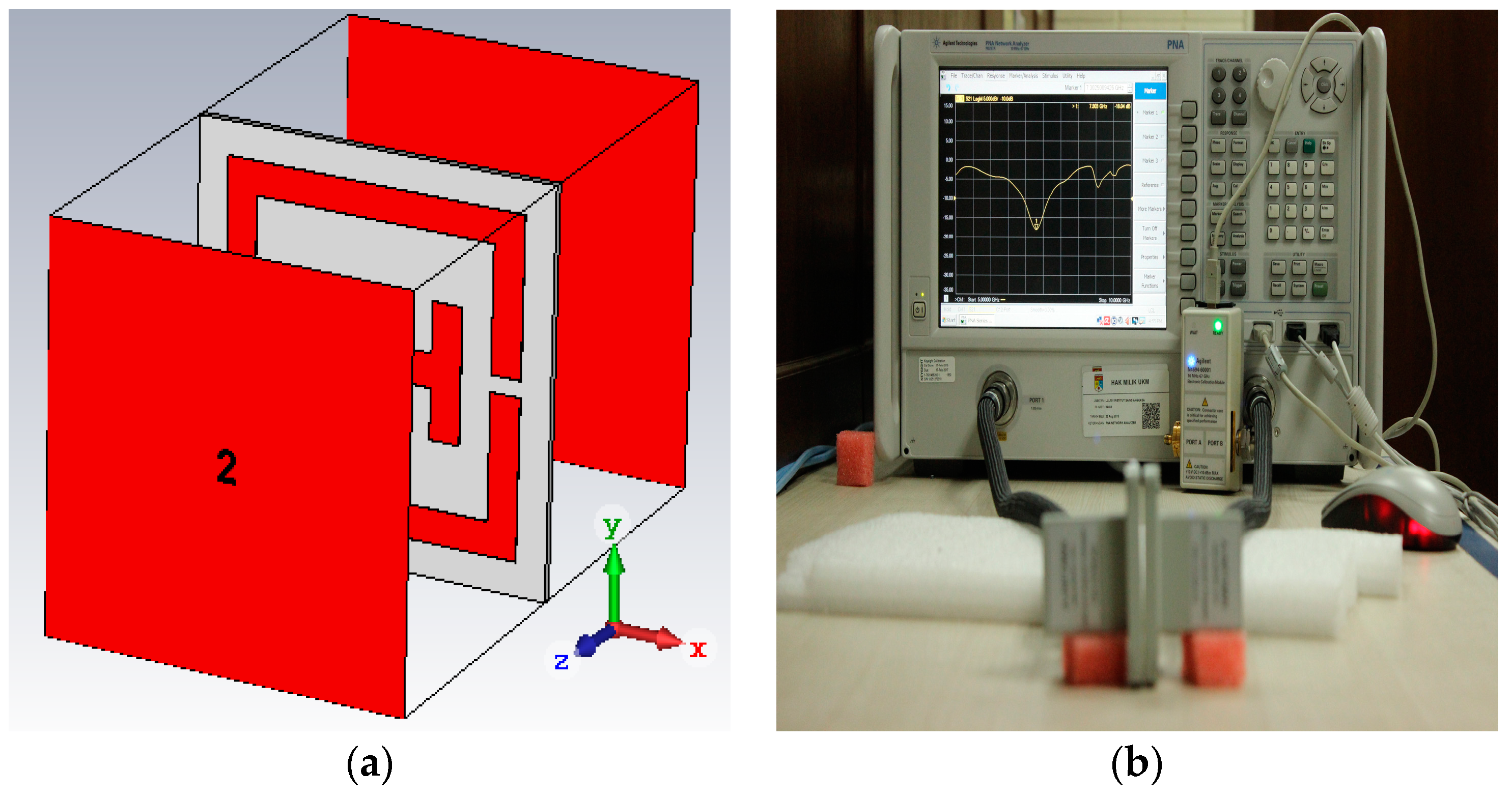

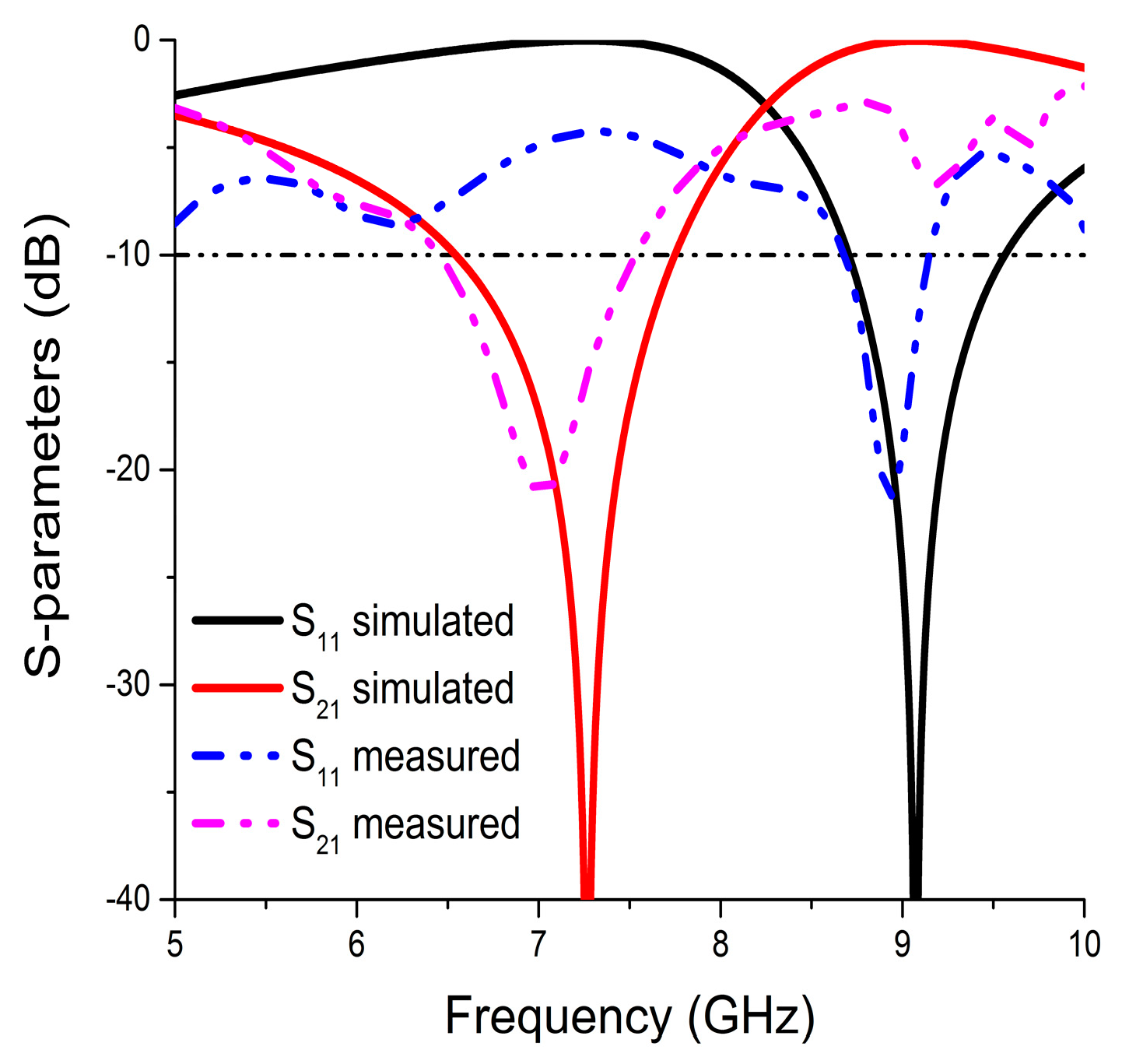
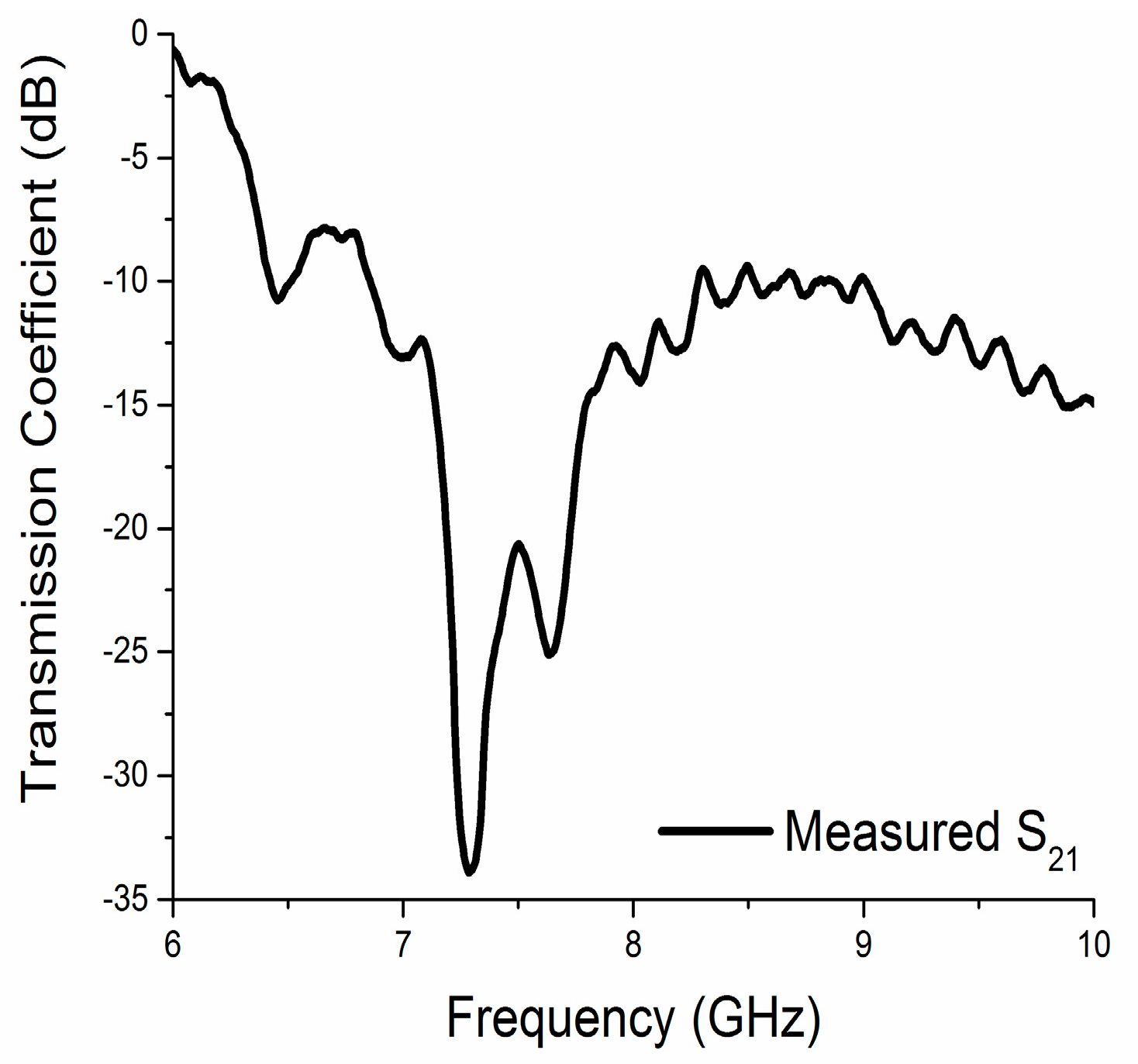
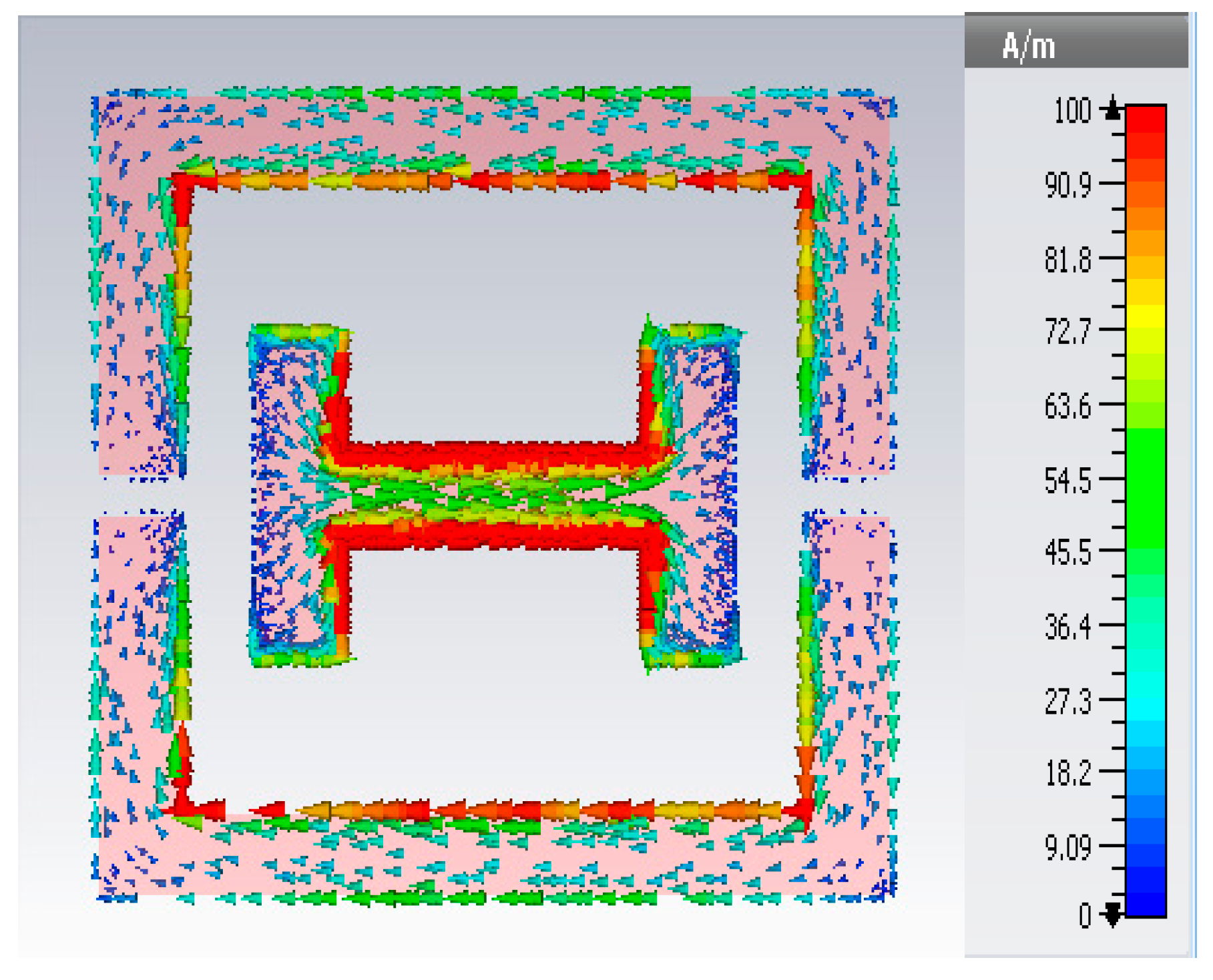
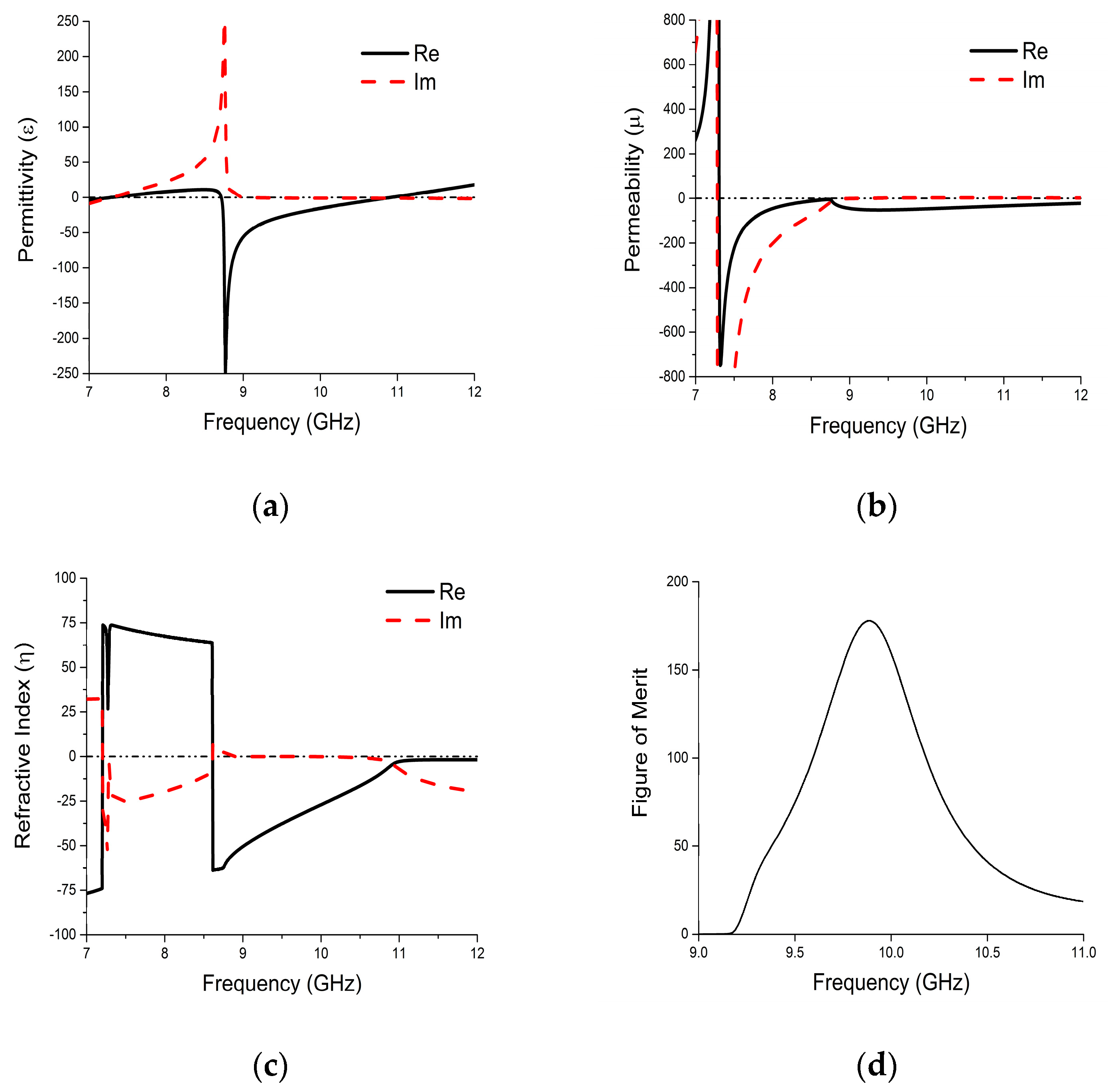
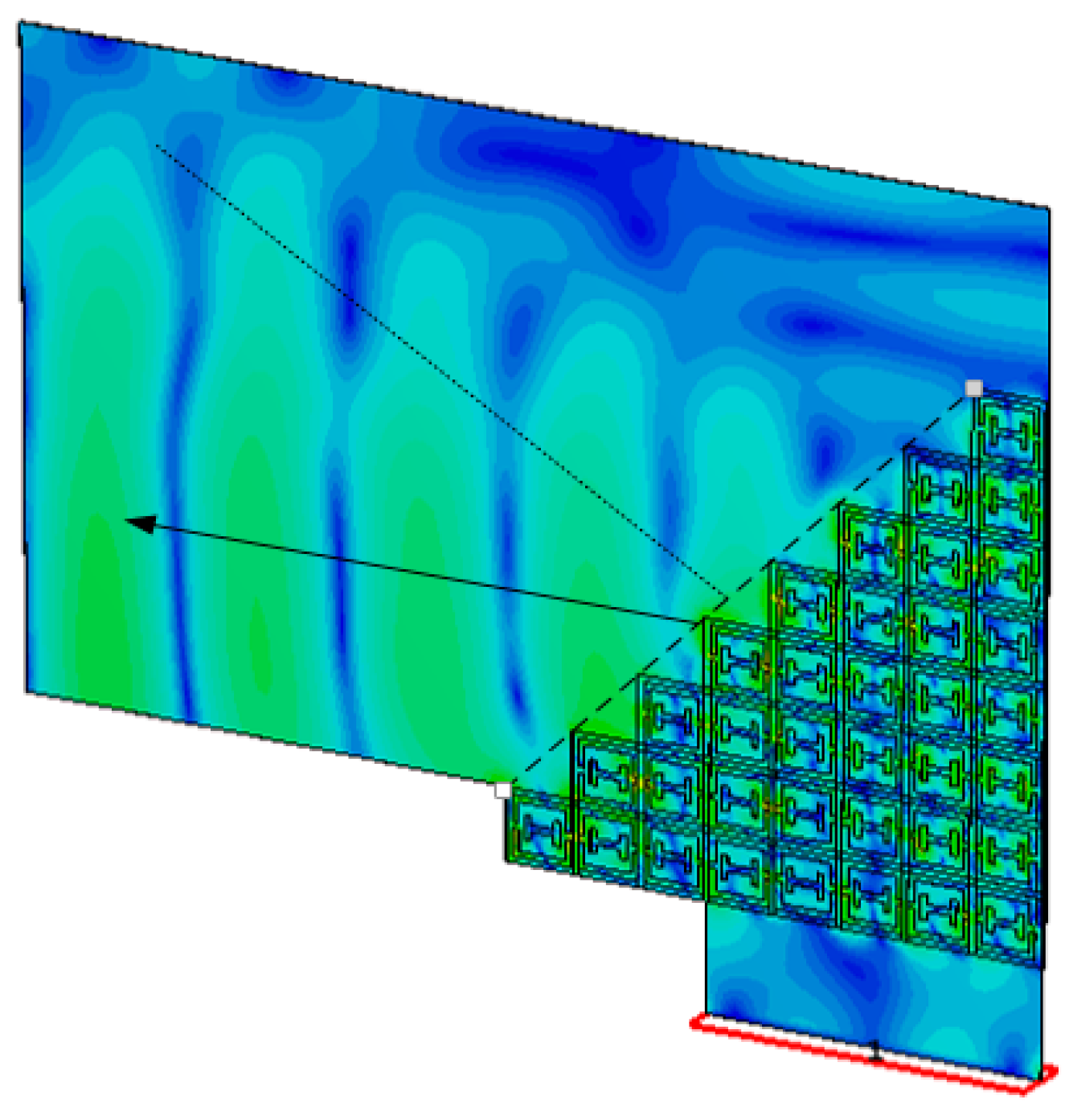
| Parameters | Values mm | Parameters | Values mm |
|---|---|---|---|
| w | 10 | c | 1 |
| l | 10 | wx | 4 |
| g | 0.5 | lx | 4 |
| e | 1 | cx | 1 |
© 2017 by the authors. Licensee MDPI, Basel, Switzerland. This article is an open access article distributed under the terms and conditions of the Creative Commons Attribution (CC BY) license (http://creativecommons.org/licenses/by/4.0/).
Share and Cite
Ashraf, F.B.; Alam, T.; Islam, M.T. A Printed Xi-Shaped Left-Handed Metamaterial on Low-Cost Flexible Photo Paper. Materials 2017, 10, 752. https://doi.org/10.3390/ma10070752
Ashraf FB, Alam T, Islam MT. A Printed Xi-Shaped Left-Handed Metamaterial on Low-Cost Flexible Photo Paper. Materials. 2017; 10(7):752. https://doi.org/10.3390/ma10070752
Chicago/Turabian StyleAshraf, Farhad Bin, Touhidul Alam, and Mohammad Tariqul Islam. 2017. "A Printed Xi-Shaped Left-Handed Metamaterial on Low-Cost Flexible Photo Paper" Materials 10, no. 7: 752. https://doi.org/10.3390/ma10070752





